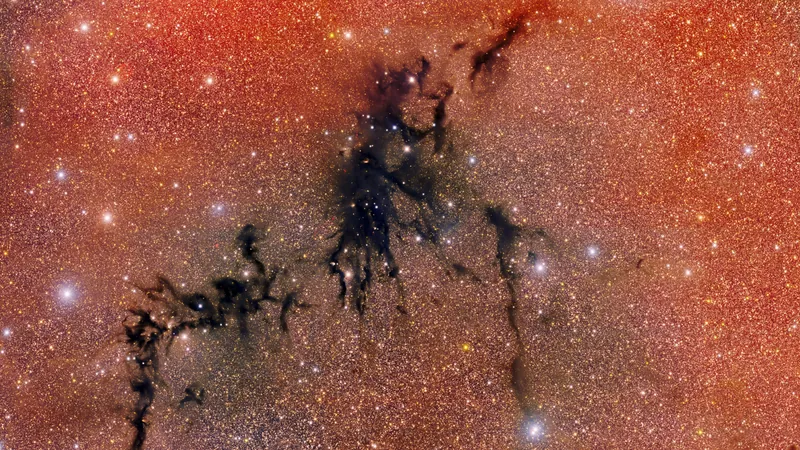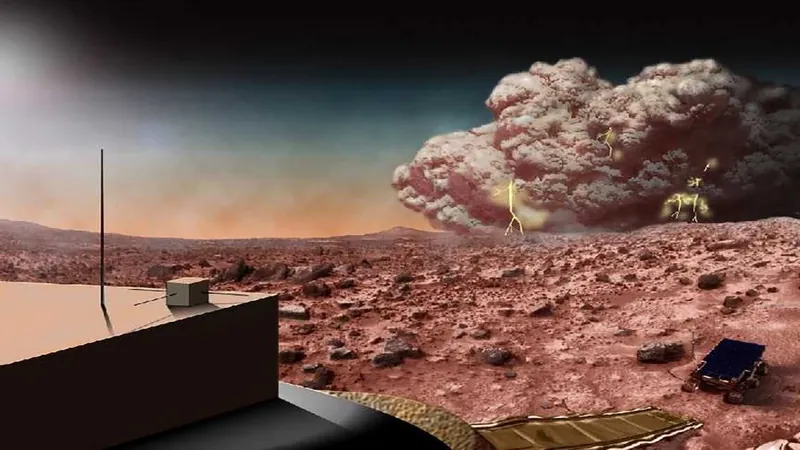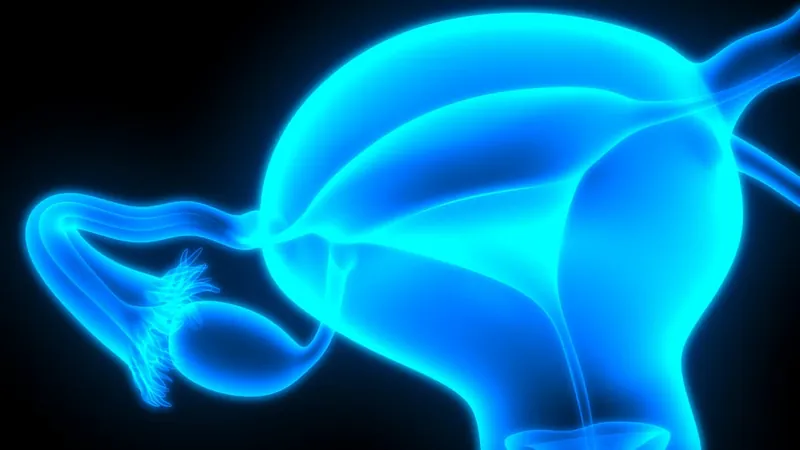
Astronomers Unveil Stellar Nursery Hidden in a Dark Nebula 60 Times Larger than Our Solar System!
2025-04-28
Author: Liam
Astronomers have unveiled a mesmerizing stellar nursery shrouded in mystery within a massive "cosmic ink blot." This incredible discovery was made using the state-of-the-art Dark Energy Camera (DECam) fitted on the Víctor M. Blanco 4-meter telescope, located in the breathtaking Cerro Tololo Inter-American Observatory in Chile.
The object of their fascination is the Circinus West molecular cloud, an extensive, cold, and dense expanse of gas and dust that stretches for an astonishing 180 light-years—about 60 times the dimensions of our very own solar system. Its opaqueness is so profound that light cannot penetrate it, giving it a dark, inky appearance that has earned it the nickname "dark nebula."
With a staggering mass of around 250,000 times that of the sun, the Circinus West molecular cloud lies a whopping 2,500 light-years away from Earth in the constellation of Circinus. This region is teeming with the vital ingredients needed for star formation!
While this nebula may seem utterly dark, its depths reveal vibrant activities. The astronomers harnessed DECam's power to meticulously zoom into this enigmatic region, unveiling youthful stars and their accompanying phenomena in vivid detail. Signs of newborn stars punctuate the silken tentacles of this cosmic cloud.
These luminous pockets of light emerge during the birth of stars, known as "protostars." These nascent celestial bodies are still in the process of accumulating mass and haven’t ignited the nuclear fusion that turns them into mature stars. As they form, protostars expel jets of material that carve out cavities in the thick gas and dust, making these energetic outflows much easier to spot than the dim protostars themselves.
In particular, the central black tendril of the Circinus West molecular cloud, dubbed the Cir-MMS region, showcases multiple high-energy outflows. At its core, a large cavity is being sculpted by the radiation from a young star, while another stellar infant is actively creating its own cavity nearby.
The abundance of "Herbig-Haro" (HH) objects—vividly glowing red patches of gas and dust near these newborn stars—further confirms the rampant stellar activity. These striking phenomena occur when jets of fast-moving gas ejected from newborn stars collide with slower-moving surrounding gas, illuminating the dark lanes of the nebula.
But it’s not just young stars that thrive in Circinus West. This molecular cloud also serves as a resting place for stars at the twilight of their life cycles. The DECam reveals the lingering red patches of planetary nebulas here—remnants of red giants that have exhausted their hydrogen supplies, shedding their outer layers, creating these intriguing structures that misleadingly bear the term 'planetary' despite having nothing to do with planets.
What an exhilarating glimpse into the dynamic life cycle of stars, as the Circinus West molecular cloud continues to fascinate astronomers and stargazers alike!









 Brasil (PT)
Brasil (PT)
 Canada (EN)
Canada (EN)
 Chile (ES)
Chile (ES)
 Česko (CS)
Česko (CS)
 대한민국 (KO)
대한민국 (KO)
 España (ES)
España (ES)
 France (FR)
France (FR)
 Hong Kong (EN)
Hong Kong (EN)
 Italia (IT)
Italia (IT)
 日本 (JA)
日本 (JA)
 Magyarország (HU)
Magyarország (HU)
 Norge (NO)
Norge (NO)
 Polska (PL)
Polska (PL)
 Schweiz (DE)
Schweiz (DE)
 Singapore (EN)
Singapore (EN)
 Sverige (SV)
Sverige (SV)
 Suomi (FI)
Suomi (FI)
 Türkiye (TR)
Türkiye (TR)
 الإمارات العربية المتحدة (AR)
الإمارات العربية المتحدة (AR)